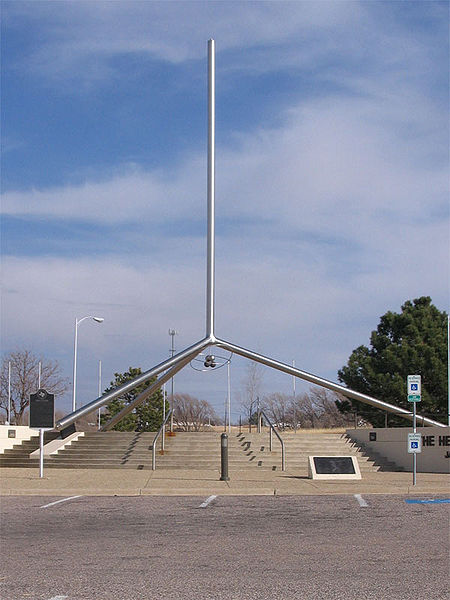A time capsule is a historic cache of goods or information, usually intended as a deliberate method of communication with future people, and to help future archaeologists, anthropologists, or historians. The preservation of holy relics dates back for millennia, but the practice of preparing and preserving a collection of everyday artifacts and messages to the future appears to be a more recent practice. Time capsules are sometimes created and buried during celebrations such as a world's fair, a cornerstone laying for a building, or at other ceremonies.
Time capsule plaque in Ypsilanti, Michigan, with instructions for the capsule to be recovered and opened upon the city's bicentennial, on July 4, 2023
The Helium Centennial Time Columns Monument located in Amarillo, Texas, holds four time capsules in stainless steel intended to be opened after durations of 25, 50, 100, and 1,000 years after they were locked in 1968.
Herrick Tower time capsule, Adrian College, Michigan, 2009–2059
Miscellaneous objects prepared for the Westinghouse Time Capsule, created for the 1964–1965 New York World's Fair, intended to be opened in 5000 years
A cornerstone is the first stone set in the construction of a masonry foundation. All other stones will be set in reference to this stone, thus determining the position of the entire structure.
A cornerstone with bronze relief images
The 1925 cornerstone ceremony of the Washington, D.C. Jewish Community Center
Ceremonial masonry stone of the Los Angeles Central Library building, laid in 1925
Cornerstone of the Church of Saint Paul in Macau (1602).








